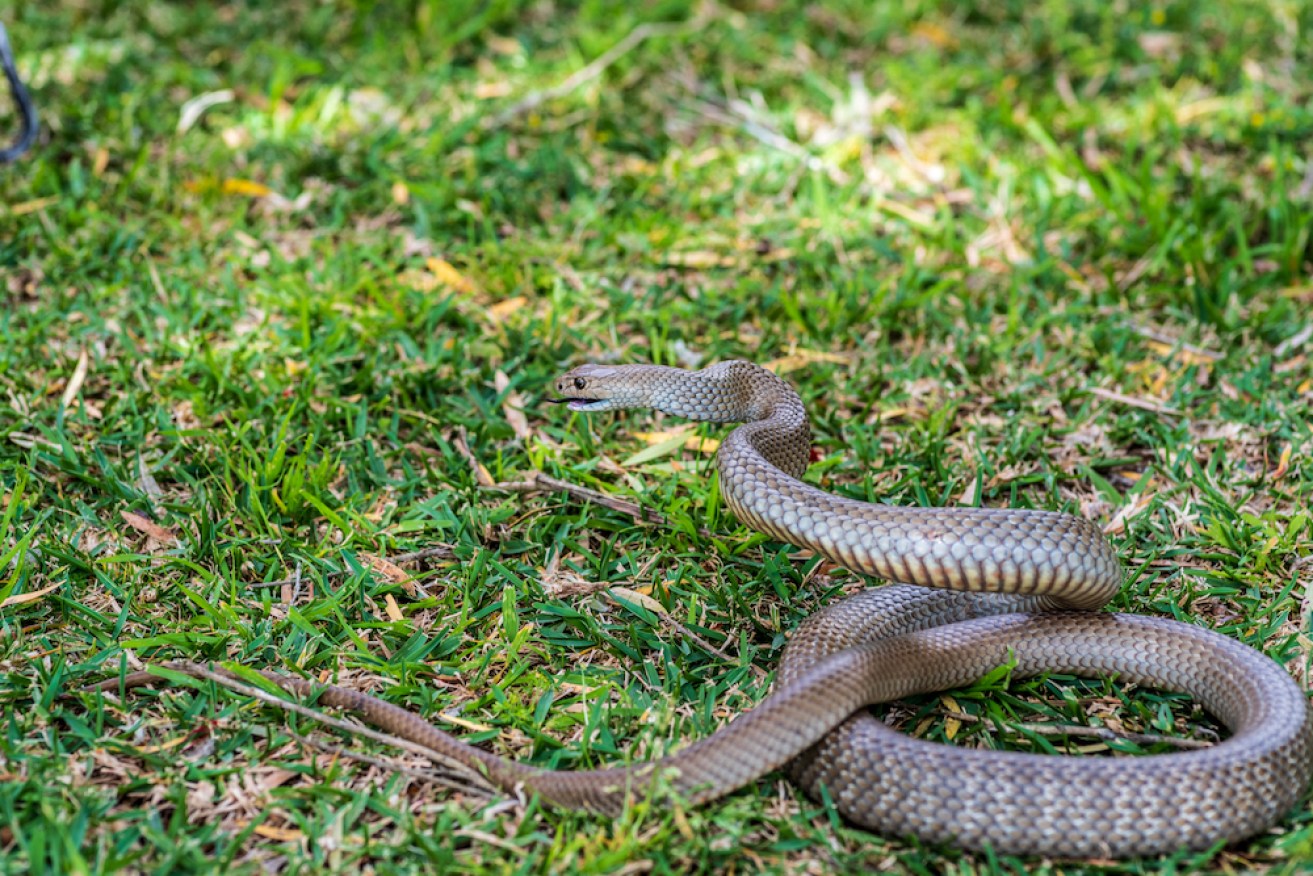Snake bite fatalities are rare, but Australians still need to be aware


Snake bites fatalities, while tragic, are rare in Australia. Photo: Getty
A man from Queensland died over the weekend from a snake bite after he tried to save his friend.
The man was aged in his 60s and was bitten when he removed a snake that had coiled around the leg of his friend.
His actions were called “heroic”.
Although Australia does have some 100 venomous types of snakes, fatal bites are very rare, but it is important to know what to do should things go awry.
“We do have extremely toxic snakes here, but realistically we need to keep it in perspective,” Associate Professor Bryan Fry from the University of Queensland’s School of the Environment told The New Daily.
“Of course, it’s an absolute tragedy but on an average year in Australia only one or two people die,” Fry said.
Snake season has kicked off earlier than usual this year because of the warmer weather.
What to do if you see a snake
It’s true, snakes are generally more scared of you than you are of them.
Humans are a predator to snakes and we are far too big to be their dinner.
Fry said they will not attack humans unless they feel the need to be defensive.
If you’re more than two metres away from the snake, keep that distance and know you’re not in any harm.
Your first instinct might be to run away in the opposite direction, however, it’s best to fight that urge.
Instead, it’s best to stay calm and slowly back away, Queensland’s Department of Environment and Science says.
Give the snake a chance to move on, but don’t take your eyes off it.
Sometimes snakes slither their way into homes. If that happens, get everyone out of the room where the snake is.
Close the doors and fill the gap underneath the door with something like a towel to prevent the snake from escaping.
Then call a professional snake catcher. Unless you are a professional, it is advised to not try and get rid of a snake, or handle one, yourself.
The South Australian Department for Environment and Water also suggests keeping an eye on a snake you spot outside your home.
“If it’s heading for the bush or an open paddock you probably won’t see it again,” the department said.
“If it disappears into a shed or under a vehicle, then you may need to call a snake catcher.”
Whatever you do, don’t try and kill a snake, Fry said.
In doing so, you may cop a bite and it is also illegal to kill Australia’s native wildlife.
What to do if you’re bitten
Any snake bite should be treated as though it is life threatening and medical attention should be sought immediately, even if the victim appears to be fine.
Australian Red Cross says there are a few first-aid steps that should be taken in the event of a snake bite.
- Keep the person who was bitten by a snake under observation, at rest and reassured
- Dial 000 and ask for an ambulance. If triple zero doesn’t work, try calling 112
- Do not wash the venom off skin or clothes – the venom can help identify the type of snake
- If necessary, begin CPR: 30 chest compressions per two breaths
- Apply a bandage to the bite site, if the bite is on a limb; make sure the limb is immobilised and the person remains still
- If available, use a bandage to cover the limb, moving towards the heart
- Keep the person still until medical help arrives.
There are two different types of snake bites – dry bites and venomous bites.
Dry bites are when no venom is released, but swelling can still occur.
Even with a dry bite, you should still consult a doctor.
Anti-venom likely won’t be prescribed, but it is still better to be safe.
“Many snake bites in Australia do not result in venom entering your body (known as envenomation), so they can be managed without anti-venom.”
Venomous bites are when venom is released into the wound. Anti-venom is available for all bites by venomous Australian snakes.
There are a few symptoms that might appear once the venom starts to spread through the body, according to Healthdirect.
They include:
- Breathing difficulties
- Headache, confusion or dizziness
- Blurred vision
- Nausea (feeling sick), vomiting (being sick) or abdominal pain
- Irregular heartbeat
- Muscle weakness or paralysis (being unable to move).
Part of the reason why so few people die from snake bites in Australia is due to the swift response from healthcare professionals who are very knowledgeable about snake bites and the fact that as a nation, we have pretty good snake awareness, Fry said.
Tweet from @RedCrossAU
Snakes to be aware of
About four in 10 snakes bites in Australia are thanks to the brown snake.
The eastern brown snake is the most common of the brown snakes.
Their venom is among the most toxic on Earth and generally their bites are painless and hard to detect.
They can be pretty much any shade of brown, “ranging from near black to light tan, chestnut or burnt-orange” the Australian Museum says.
They are found in all the eastern states on mainland Australia and sometimes in South Australia and the Northern Territory, and can thrive in areas that are populated by humans.
If startled, eastern browns will be defensive and are known for being aggressive.
“Brown snakes are the perfect illustration of why with any snake bite, particularly in Australia, where they’re pretty rapidly acting, you need to immediately ring for help and go to the hospital,” Fry said.

Eastern brown snakes are venomous and usually very defensive.
Tiger snakes, which get their name from the striped pattern on their body, are also among the most deadly snakes in the world.
Some tiger snakes do not have stripes and not only are they found on land, but they get through water with ease.
Tiger snakes are found in southern parts of Western Australia, South Australia, Tasmania, Victoria, New South Wales and Queensland.
They are also sometimes aggressive, though generally are pretty shy.

The heads of tiger snakes can evolve rapidly in response to feeding on large prey.
The red-bellied black snake is another species to be aware of, even though there has not been a recorded death as a result of a bite in Australia.
They can be spotted thanks to their red belly, as their name implies and are black on top.
Red bellied black snakes will generally retreat before attacking.
While there are no recorded deaths in Australia, their venom can still cause illness and can result in hospitalisation.

Red-bellied black snakes are generally shy, but are venomous.








